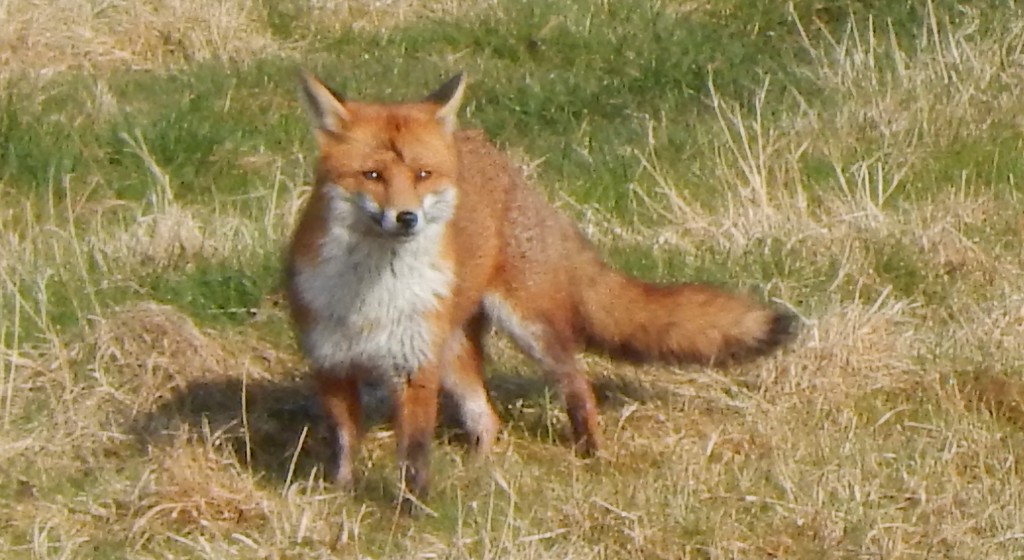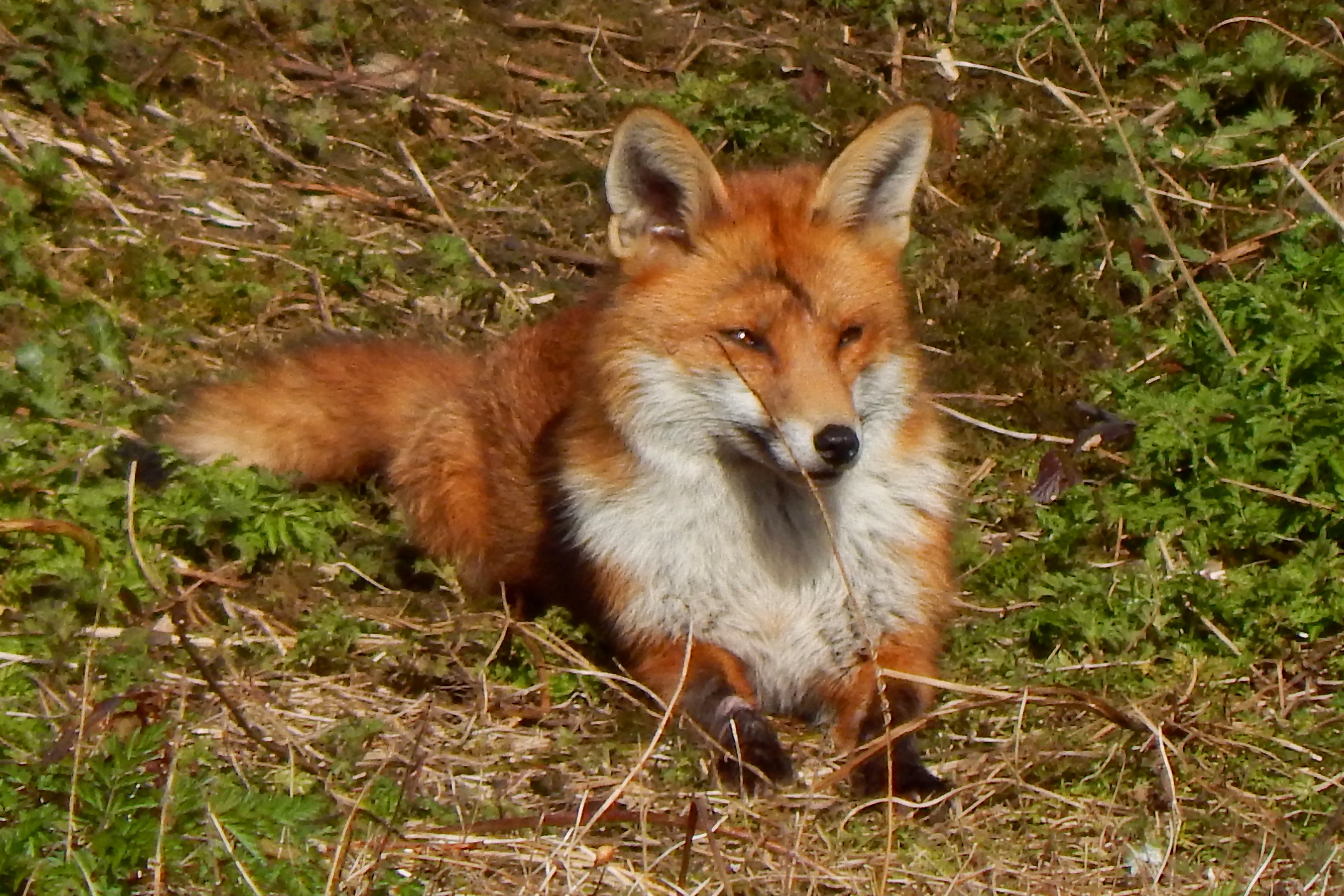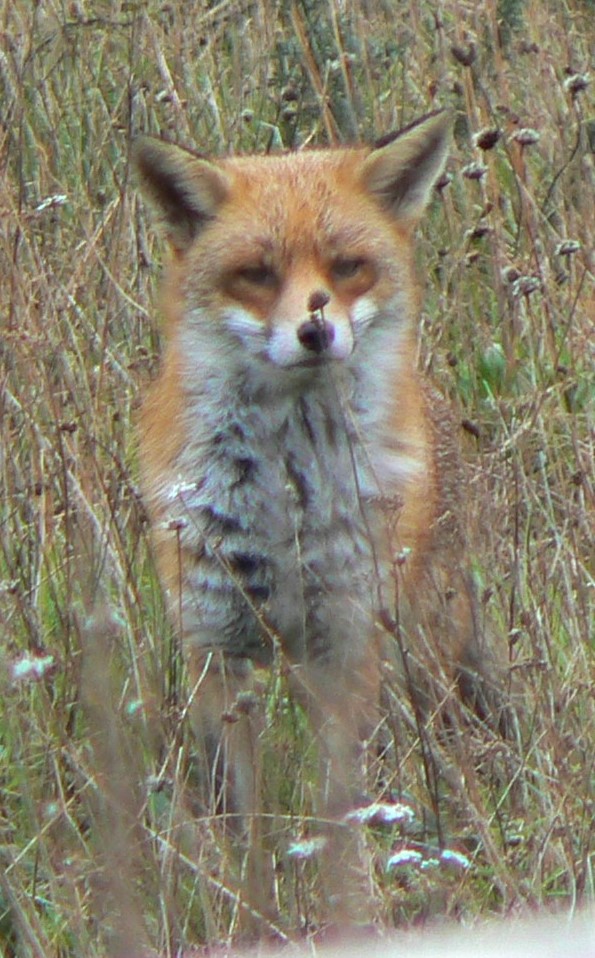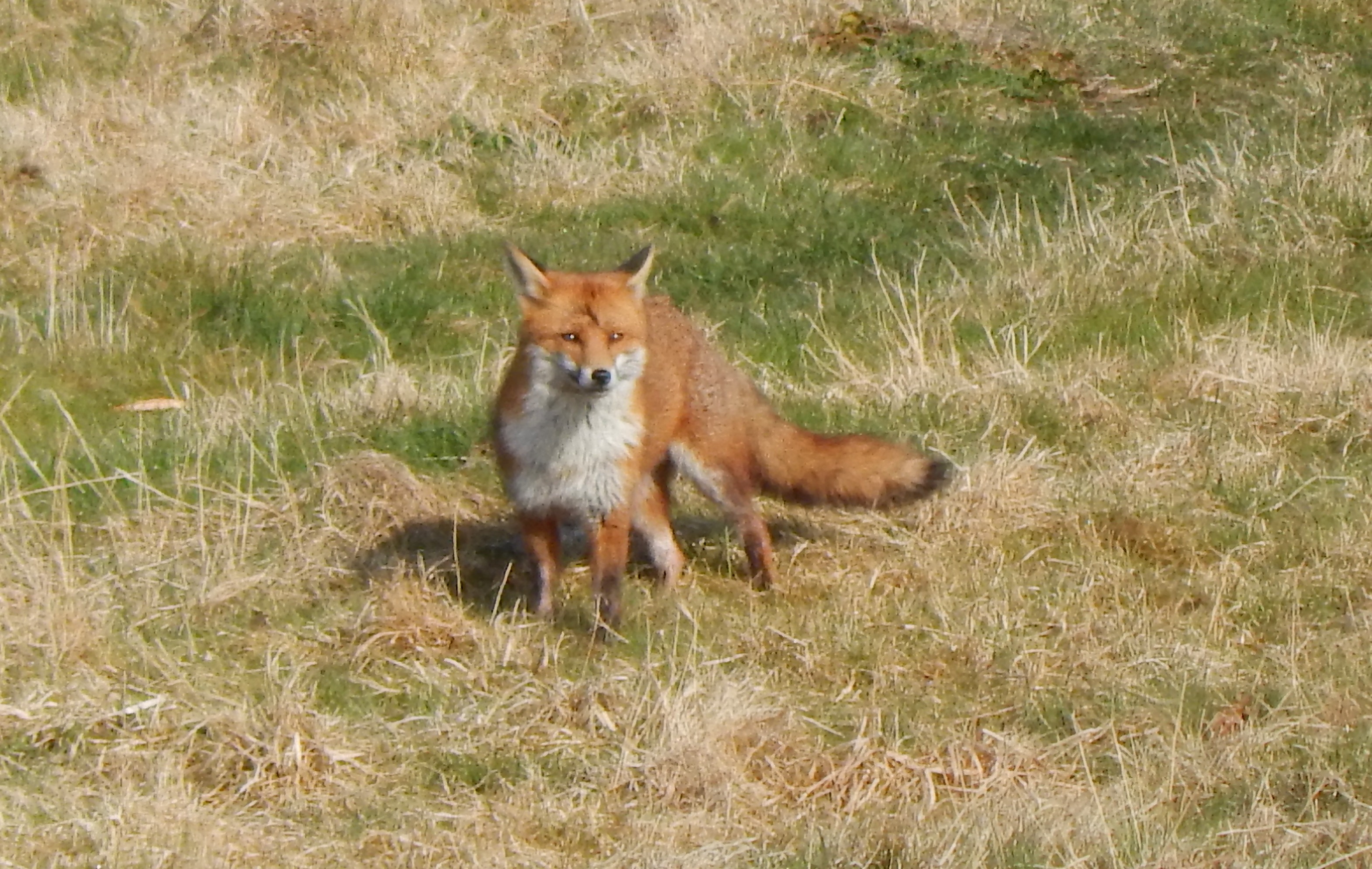[362] Vulpes vulpes, Fox

Introduction
Vulpes vulpes, the Fox, is a rural hunter that has become an urban scavenger.
All the other members of Vulpes and several close relatives from other genera are called Foxes, so sometimes it is called the Red Fox.
Taxonomy
Kingdom – Animals
Phylum – Chordates
Class – Mammals
Order – Carnivora
Family – Canidae
Subfamily – Caninae (All extant species)
Tribe – Vulpini (Foxes)
Genus – Vulpe
Scientific Name – Vulpes vulpes
It has 45 subspecies, more or less defined geographically.
Name
Fox is a very old word for the animal that may derive originally from its long tail. Red, of course, used to mean any shade of brown or orange.
A female fox is called a vixen. This is derived effectively from fox-en, as a diminutive of fox (in the same was as maiden and chicken.)
Vulpes is the Latin name for the Fox.
Description
It is never easy to define taxonomic differences. We may instantly recognize that a fox is not the same as a dog, but the distinction between the two tribes Vulpini (fox-like species) and Canini (dog-like species) is not so easy. To be precise, fox-like species, ‘… are distinguished from all other Caninae ‘in possessing a wide paroccipital process that is broadly sutured to the posterior surface of the bulla with a short and laterally turned free tip that barely extends below the body of the process.’ [If this is not immediately clear to you, it’s about small differences in the make-up the bones of the skull.]
Vulpes vulpes is the only fox likely to be seen in the UK. It is recognizable from its face, its orange-brown coat and long furry tail. Most subspecies have a similar coloration but some animals have other colour morphs.



As a rural species, they feed primarily on small rodents, [243] Rabbits, game birds, reptiles and invertebrates, and sometimes fruit or vegetable matter. As an urban species they are largely scavengers. They are now relatively commonly seen in towns.
Habitat and use
The Fox is a common resident species all over Eurasia and North America and has been introduced to Australia. Vulpes vulpes crucigera is found over most of Europe and has been introduced in Australia and North America.
It has a long history of being hunted in Britain and has been used as a source of fur. The Silver Fox is a melanistic form bred for its fur, which is mainly black or dark grey, sometimes with some silvery grey or white.
Foxhunting arose in England in the Sixteenth Century and was a significant part of country life until it was banned by law in 2005. Traditionally foxes were hunted by men on horseback led by packs or hounds trained to follow their scent.
As for most common animals, the fox crops up many times in religion, mythology, folklore and literature – particularly children’s literature. The anthropomorphised figure Reynard the Fox dates from mediaeval allegorical fables in English, French, German and Dutch. Reynard is known for his cunning and deception and the expression ‘as cunning as a fox’ is well-known in English.
Other Notes
In Britain you are now much more likely to see a Fox in a town or city than in the countryside. I have seen many. They are most often active at dusk and dawn but can be seen in the daytime (and heard in the middle of the night.) They are very habitual – if you spot one crossing the road, it may reappear at the same spot every night about the same time.
I was lucky enough to spot one resting in the summer sun at the edge of a local park.
See also.
This is our last mammal. You can find the others via the Mammals Category link below.
